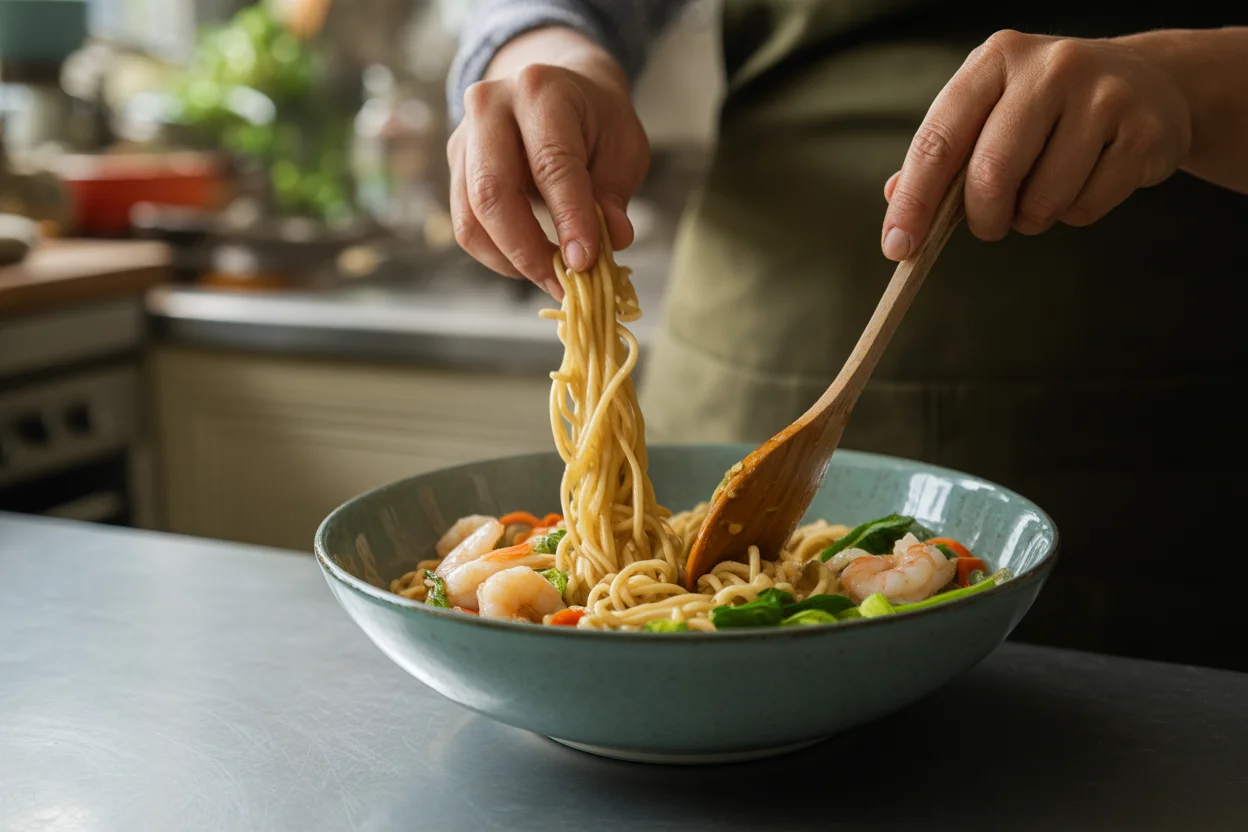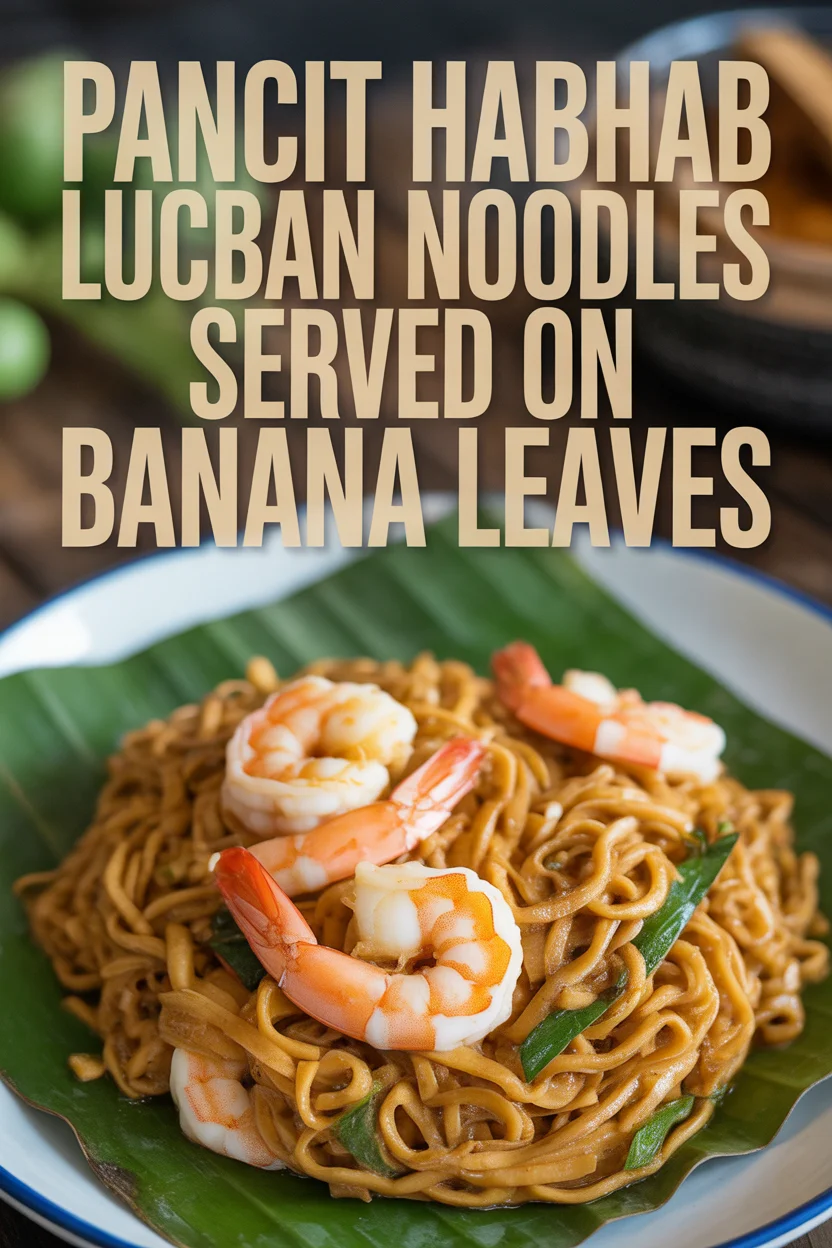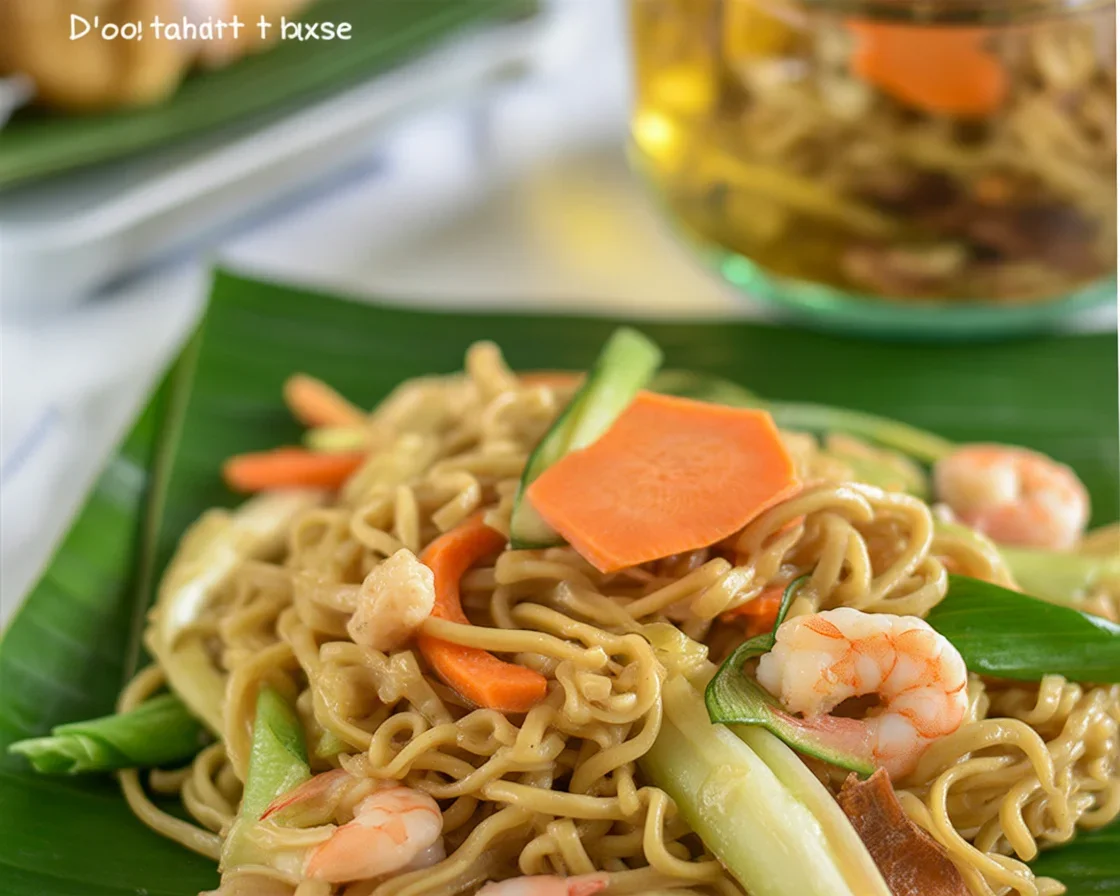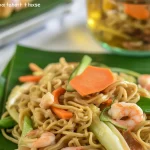Ever tried Filipino pancit habhab and wondered why people go wild for it? Honestly, when I was first introduced to it, I was like—wait, eating noodles straight off a banana leaf, no fork in sight? That’s living on the wild side, right? But if you’re like me, sometimes you just crave a bold, fast, not-too-fancy meal—especially if you love mixing up your regular dinnertime routine. If your meals are getting, well, a bit boring lately, and you need a break from the usual, Filipino pancit habhab could be the answer. (Side tip: If you’re curious about other off-beat Pinoy classics after this, check out these Filipino pork BBQ with banana ketchup glaze or maybe give a whirl to some Filipino breakfast silog combos made easy—trust me, you’ll be in for a ride.) 
Introduction to pancit habhab
Pancit habhab is not just another noodle dish. It comes from Lucban, Quezon—super specific, and if you ever visit, the pride is real. One thing, though. Forget your fork. This is the kind of food tradition where you eat directly off a banana leaf (and yes, with your mouth. Not your hands. Game changer.) Some folks even roll up the leaf and just shovel the goodness in—nobody judges here.
I remember the first time I tried it during Pahiyas Festival. The vendor plopped a steamy pile of brown noodles right on a banana leaf, smiled, and just said, “Go on.” Awkward? Maybe a bit! Fun? A thousand percent. Pancit habhab is all about portable, street-side enjoyment, packed with vegetables, pork, and that zingy vinegar at the end. Everything just works together. You get salty, savory, and a hit of tang—all balanced out with squeaky-soft noodles and the earthiness of banana leaf. 
Preparing noodles
Finding the right noodle is a dealbreaker here. For pancit habhab, we use Lucban miki—a local egg noodle that’s firmer than your regular pancit canton. Sometimes, though, I can’t get the right noodles at my usual Asian store, and you know what, I go for pancit canton or even egg noodles in a pinch. Not a crime.
You wanna cook the noodles so they’re chewy but not mushy. I boil a pot of water, add a bit of salt, drop in the noodles, and just let them swim for about 3 minutes or so until they’re soft but slightly firm. Rinse with cold water. (Don’t skip this step, or you’ll get gluey noodles. Not cute.)
Oh, and please—no overcooking. Soggy noodles are just sad, trust me. 
Cooking sauce
Now, onto that good stuff: the toppings and the sauce. You’ll want some pork belly, sliced thin (lets the fat render fast), garlic, onions, carrots, and sayote if you’re feeling traditional. I love adding a bit of chicharron on top after, but that’s just me.
Here’s my move:
Brown the pork till a bit crispy. Set aside some for topping. In the same pan, toss in the garlic and onions for maybe a minute, then the veggies. Quick fry, nothing fancy. Splash in some soy sauce and a tad of oyster sauce, then bring back the pork. Pour in a little broth (or water if you gotta) until it simmers.
Toss the noodles straight in the pan. Now stir, baby, stir. Let the sauce hug every noodle. It smells wild at this point, and the colors start to pop. That’s when you know you’re close.
Pancit habhab changed my noodle game forever. I never thought eating without utensils could be this much fun, and I swear the flavors are even better. If you’ve never tried eating off a banana leaf, there’s just something special about it!
Serving on banana leaves
Here’s the fun, weird, eco-friendly part. Pancit habhab is traditionally served on—yep—banana leaves. Skip the plates. Just tear off a wide piece, lay it flat, and dump a good pile of noodles right in the center. (It’s rustic, it smells fresh, and, honestly, makes cleanup super easy.)
Now, the best part: don’t use a fork, dude. You fold the leaf like a loose taco and bring it near your mouth. Gently push the noodles in with your lips. I told my kids, “It’s okay to be a little messy!”
- Want some extra flavor? Sprinkle suka (vinegar) over the top—pure magic.
- Throw some chopped chilies or calamansi if you like that bright punch.
- And if you’re in a party mood, add more chicharron for crunch.
Kids go wild for the hands-on eating part, and adults? Well, we pretend we’re being fancy while eating with faces.
Cultural story
Honestly, Lucban locals have turned pancit habhab into more than just lunch. It’s center stage at festivals and street parties. You’ll see aunties serving long lines of noisy teens and grinning grandpas, all packed shoulder to shoulder, elbowing for a spot.
It’s not just about eating—it’s social. You connect over banana leaves, swap stories, and sometimes debate whose habhab is best in town. They say the first time you enjoy it street-style, you feel like part of the Lucban family—even if you’re an outsider. That’s powerful! Oh, and every time I whip this up at home, family asks, “When’s the next fiesta?” It brings out everyone’s playful side, trust me.
Flavor notes
Here’s what I love: pancit habhab brings together savory, slightly sweet, and tangy. The rich soy and pork combo sets the base. The vinegar? Wakes up your taste buds, zing! Veggies add color and that fresh crisp bite.
But if you mess up the noodle texture, or skimp on the pork, well, it’s a different animal altogether. I’ve doused too much vinegar once—it got weird fast. So go easy. The right balance just sings.
Every time I taste this, there’s a bit of naughtiness—bold, bright, totally not subtle. No two plates ever taste quite the same, but that’s part of its wild charm.
Presentation tips
Pancit habhab’s all about looking as fun as it tastes. Forget the fancy bowls. Lay down fresh banana leaves right on the table—yes, for everyone. I’ll even let folks tear their own piece (more interactive, less fuss).
Fan out some wedges of calamansi and vinegar in dipping bowls nearby. Got leftover pork cracklings? Pile ’em high in a side bowl. If you’re throwing a backyard party, toss the banana leaves over your picnic table for instant fiesta vibes—kids love it, adults loosen up, and I swear, the meal actually tastes better.

So there you have it—my not-so-fancy but ridiculously tasty take on Filipino pancit habhab. If this tempts you, I highly recommend checking the Pancit Habhab Recipe for a step-by-step play, or even watching how folks do “No Forks, Please……Eating PANCIT HABHAB Street-Style” for firsthand action (yes, it’s a riot). Want to see just how proud Lucban people are of their noodles? There are tons of stories on Pancit habhab from Lucban, Quezon floating around social media. Trust me, it’s worth the dive—your next mealtime could be a fiesta!
Pancit Habhab
Ingredients
For the Noodles
- 8 oz Lucban miki noodles Can substitute with pancit canton or egg noodles if unavailable.
For the Sauce & Toppings
- 1 lb pork belly Sliced thin for quick cooking.
- 4 cloves garlic Minced.
- 1 medium onion Chopped.
- 1 medium carrot Sliced into thin strips.
- 1 medium sayote Optional, sliced.
- 2 tbsp soy sauce
- 1 tbsp oyster sauce
- 1 cup chicken broth Or water.
- to taste chicharron For topping.
- to taste suka (vinegar) For serving.
- to taste chopped chilies or calamansi Optional, for added flavor.
Instructions
Preparation of Noodles
- Boil a pot of water, add a bit of salt, and cook the Lucban miki noodles for about 3 minutes until soft but slightly firm.
- Rinse noodles with cold water to prevent them from becoming gloppy.
Cooking the Sauce
- In a pan, brown the pork belly until crispy and then set aside some for topping.
- In the same pan, sauté the garlic and onions for about 1 minute, then add in the carrots and sayote.
- Quickly fry the vegetables, then add in soy sauce, oyster sauce, and some chicken broth.
- Return the browned pork to the pan and let it simmer.
- Toss the cooked noodles into the pan and stir until the sauce coats every noodle.
Serving
- Lay a wide piece of banana leaf flat on a plate and pour a good amount of noodles in the center.
- Serve with suka, chopped chilies, calamansi, and more chicharron for garnish.
- Encourage guests to eat directly off the banana leaf without utensils.

